Water is flowing in the Delta
Something special began May 1, 2021. The governments of Mexico and the United States agreed to begin delivering water specifically for the environment of the Colorado River Delta. The river is beginning to flow in areas of Mexico that are often dry.
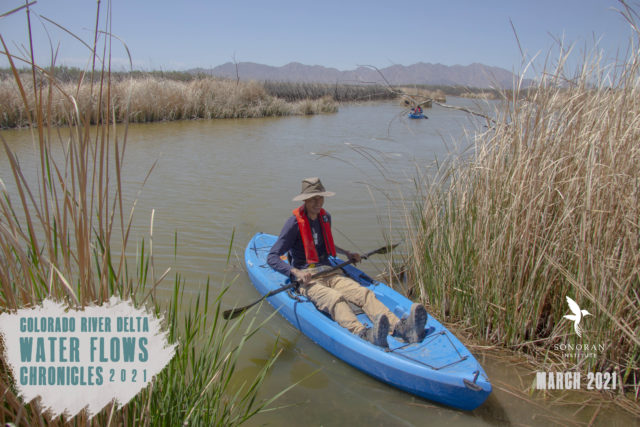
This travelogue shows how the water is traveling and what our team is witnessing along its way. The water will bring life to native habitats and restoration sites, provide higher quality water to farmers, and give people who have rarely experienced a flowing river a chance to feel the joy of jumping in.
May 1, 2021
Historically the Colorado River would flood every spring. The snow way up in the Rockies would begin to melt and water would flow through all the little creeks and streams, gathering together and gaining strength through all the tributaries. The river would swell, and even overflow the banks during some years.
The reliable floods did many good things for the environment, like carrying sediments and nutrients downriver. Many plants, animals and people grew to rely on the spring floods that helped them prepare for the hot summer that was on its way. However, it’s different now because Colorado River water is in high demand with growing cities and towns throughout the basin. There are many dams and diversions that have changed the flow of the river. So much water gets used along the river for cities, agriculture and industry that oftentimes there’s not enough left to reach the sea. Plus, drought has brought new challenges. There is less snowfall, less rain, and evaporation has become a bigger problem in recent years.
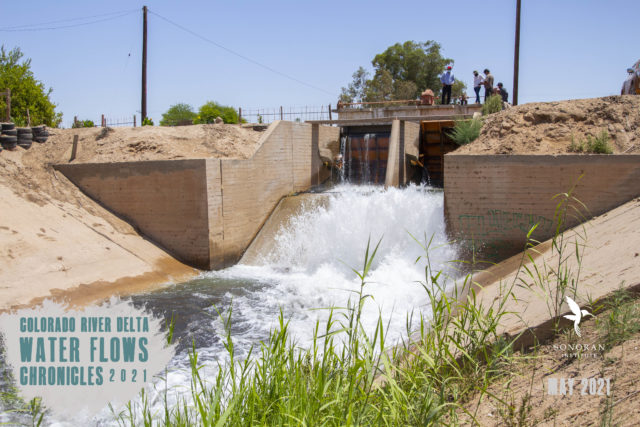
On this day, a team of irrigation module engineers opened a water gate along an irrigation canal in the Mexicali Valley where the water’s journey was authorized to start, mimicking the historical spring floods that reached Mexico. You wouldn’t believe the rush! Water drops were churning together, making big waves, ready to flow from the agricultural irrigation canal into the river channel.
May 2, 2021
The water is flowing through Chausse, a restoration site run by Restauremos el Colorado, who are partners with Sonoran Institute and other non-profit organizations in the Raise the River alliance. These teams of scientists are excited to measure how fast the water will flow. Some of the team members are getting teary-eyed remembering the planning and negotiations that have taken years to accomplish.
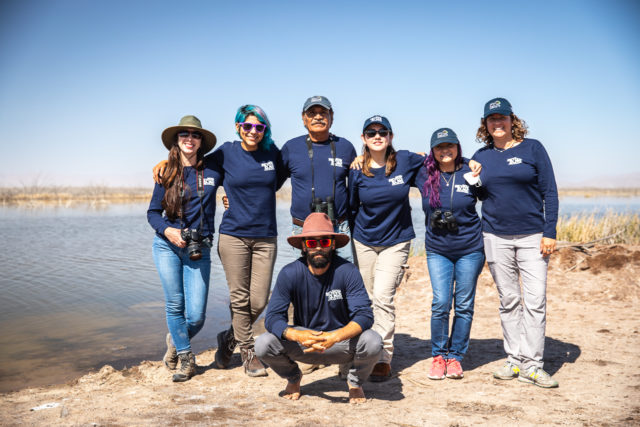
Without enough water the river and its trees and plants dry up. People can’t go fishing or boating, and farmers can’t keep their crops alive. Birds who need to rest when they are migrating have nowhere good to land—no bugs to eat in the sand, and no bushes to keep them safe. When the river stays dry too long people tend to forget all about it, some even lose hope. But watching the water move through the restoration site gives a taste of what the river used to be like years ago. Some of the water drops are taken up by tree roots, sustaining them. After many years of drought, the trees really need it!
May 3, 2021
The science team has been talking about evaporation: when water just turns into vapor—poof! Evaporation rates are tracked to determine how much water disappears from the channel due to heat, sunlight and whether there is tree cover or not. This helps our scientists develop restoration plans to attempt to keep as much water in the channel as possible.
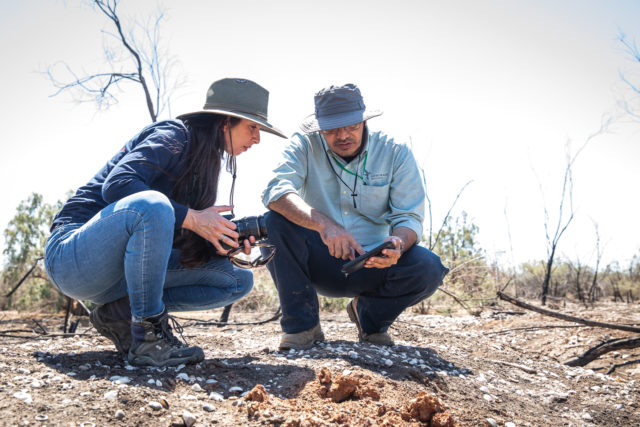
May 4, 2021
Some of the activities that our monitoring team did to get ready for the flow’s arrival at the Laguna Grande restoration site were: clearing debris from the river channels, so the river flows easily; installing sensors that allow scientists to measure and record the water levels and temperature; setting time-lapse cameras to record the water’s flow and camera traps to see how wildlife respond to the freshwater flows.
May 5, 2021
As water flows into Laguna Grande we can see just how beautiful the site is with high levels of water! The cottonwoods are so tall! The willows are so pretty! A beaver swims to its den entrance which is much deeper underwater than usual. Now, this is what the river used to be like! Many, many people come from the city of Mexicali to help plant trees every year. They grow fast too—in just a few years they are more than four stories tall (15 meters or 45 feet).
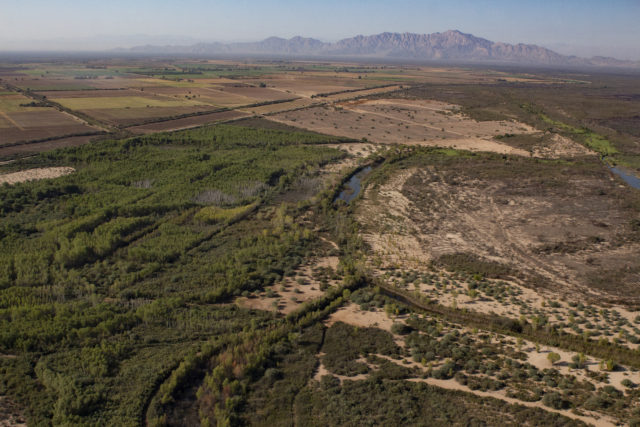
May 6, 2021
The meander, a spot where the river channel curves back and forth, like a snake, is lazy like a Sunday morning. A heron swoops in for a fish. A few racoons and a bobcat stop by the river’s edge, eyeing the fish swimming below.
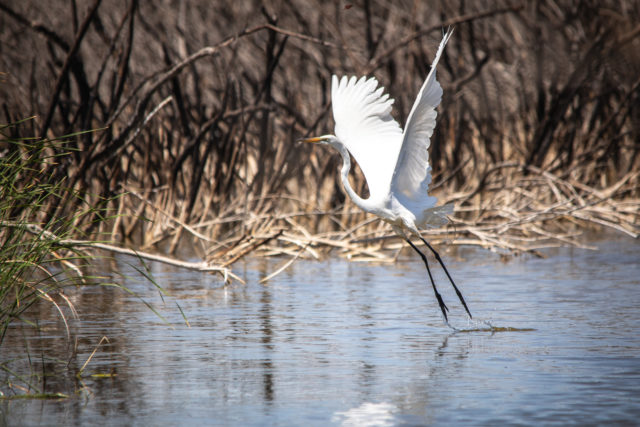
May 7, 2021
The kids from the Mexicali Valley are having a water fight! The Colorado River flows past a place called Vado Carranza, near Ejido Carranza, right by the road and a lot of families that live close by have been having picnics here, swimming and laying on the warm sand. Kids especially have never seen this part of the river with water! Teens and families splashing all around—it’s like a big fiesta!
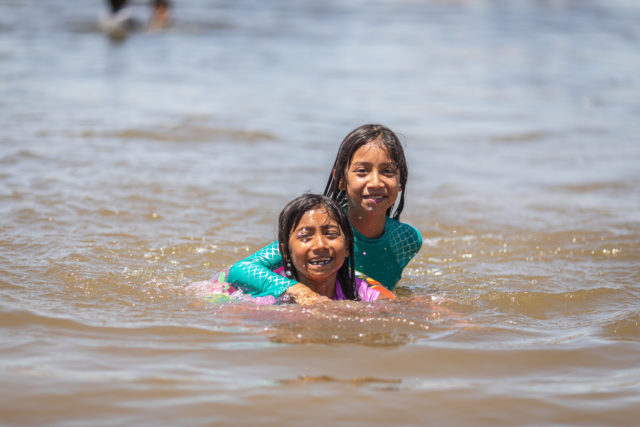
To find out where the water goes next, stay tuned for Part 2.
There are three parts to this story. This is part 1.
Part 2: Celebrating the Water Flowing in the Delta
Part 3: Water is on the Way: The travelogue completes
Esta publicación de blog está disponible en español: Crónica: Los flujos de primavera van rumbo al mar
Blog Post By: Corinne Matesich, Marketing Communications Manager and Gabriela González, Environmental Education and Research Coordinator
